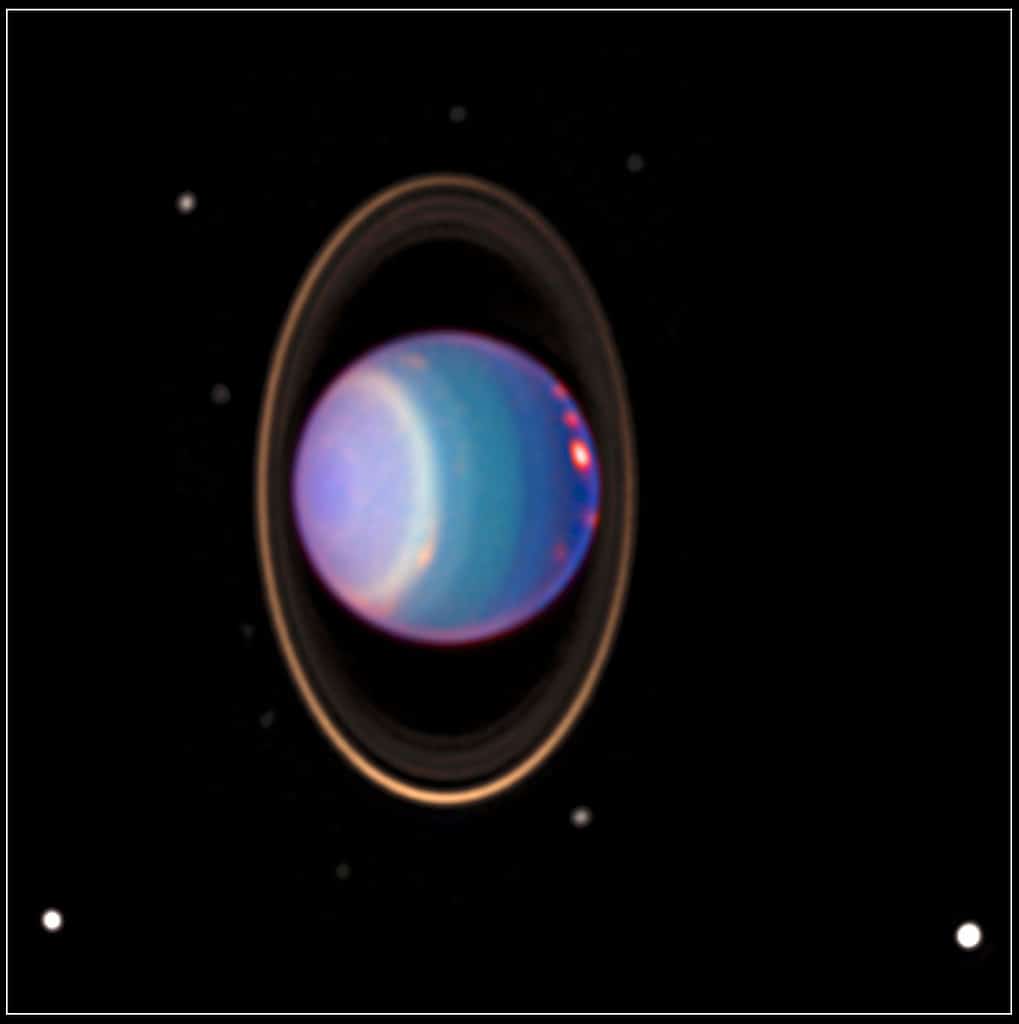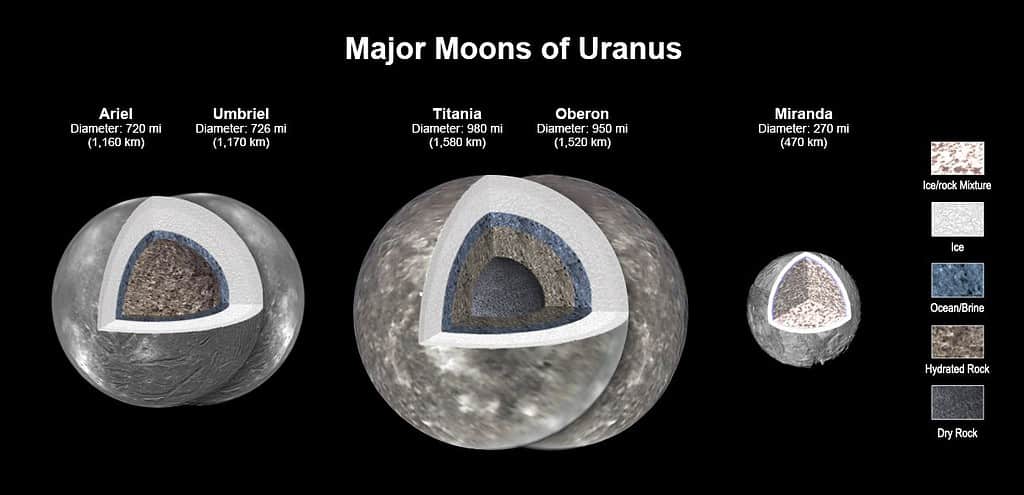
For years, Uranus has been a source of mystery for planetary scientists. The ice giant has remained an enigma with little information on its composition, structure and history. However, a new study published in the Journal of Geophysical Research provided groundbreaking insights into the internal makeup and structure of Uranus’ five largest moons: Ariel, Umbriel, Titania, Oberon and Miranda.
Using re-analyzed data from NASA’s Voyager spacecraft and new computer modeling, the study suggests that four of Uranus’ largest moons may contain oceans between their cores and icy crusts. The researchers believe these oceans could be dozens of miles deep and contain water-rich and dry rock.
“When it comes to small bodies – dwarf planets and moons – planetary scientists previously have found evidence of oceans in several unlikely places, including the dwarf planets Ceres and Pluto and Saturn’s moon Mimas,” said lead author Julie Castillo-Rogez of NASA’s Jet Propulsion Laboratory.
“So there are mechanisms at play that we don’t fully understand. This paper investigates what those could be and how they are relevant to the many bodies in the solar system that could be rich in water but have limited internal heat.”

This new research has implications that could go beyond Uranus.
While scientists had previously considered the other moons too small to retain the necessary heat to keep an internal ocean from freezing, new findings from the study show that the four largest moons likely contain oceans. The oceans may even be warm enough to potentially support habitability, especially in the cases of Titania and Oberon.
The authors built computer models incorporating additional findings from NASA’s Galileo, Cassini, Dawn and New Horizons missions, which discovered ocean worlds. They also looked at the composition of the oceans to learn about possible materials on the moons’ icy surfaces.
The study found these surfaces are likely insulated enough to retain the internal heat needed to host an ocean. Additionally, the researchers found what could be a potential heat source in the moons’ rocky mantles, which release hot liquid, further contributing to the warm environment that the oceans need to survive.
However, internal heat is not the only factor contributing to a moon’s subsurface ocean. Chlorides and ammonia are also likely abundant in the oceans of Uranus’ largest moons. Additionally, ammonia has long been known to act as an antifreeze. At the same time, the modeling suggests that salts present in the water would also act as antifreeze, maintaining the internal oceans.
Despite the discoveries, much must be done to fully understand the composition of these moons and their host planet. The study’s findings will inform the design of future missions to explore the icy giant and its moons and help scientists and engineers choose the best science instruments to survey them.









